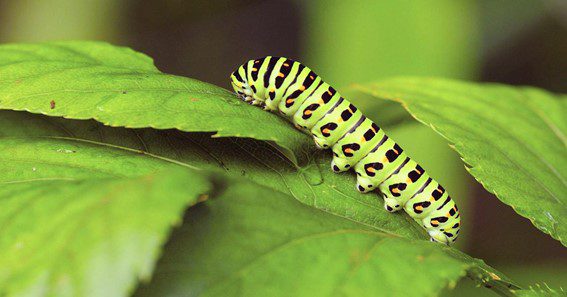It isn’t hard to be interested in the feathery, sensitive excellence of butterflies and kites. In any case, the caterpillars they start with – with various shadings, shapes, markings, and defensive layers – can be similarly enamoring. However, you can also have a look at what do caterpillars eat in order to keep them healthy. What all caterpillars share for all intents and purposes is the mind-blowing transformation in their excursion from egg to butterfly or moth.

Caterpillars address just one period of this groundbreaking trip – the larval stage – during which their primary objective is to take care of and develop. They become such a great amount during their short lives that they typically shed their skin a few times, regularly rehashing their appearance starting with one instar stage then onto the next. Afterward, the butterfly caterpillars merge one final time into an extreme chrysalis to begin their enchanted makeovers and moth caterpillars envelop themselves by a satiny cover.
Regardless of whether you like to recognize caterpillars in the wild or decide on a companion from a foe in your nursery, here are the absolute most amazing types of nature.
1. Spicebush Swallowtail Butterfly Caterpillar
From the outset, these shocking green caterpillars look like little snakes or tree frogs – a smart mask intended to drive away hunters. The most phenomenal is bogus tan eyespots in dark. They are not genuine eyes, yet the degree of detail in this mimicry is prominent, with dark understudies in the middle total with white reflections that look like light reflections.
On the off chance that the “hostile stare” neglects to scare hunters, the Spicebush Swelltail Caterpillars can flush out their radiant yellow retractable horn-like organs (called Nutricia) from behind their heads, which bear compound anti-agents. We do.
2. Hickory Horned Devil (Regal Moth) Caterpillar
The hickory horned demon looks risky, yet is only an innocuous, goliath caterpillar. Perhaps the biggest caterpillar in North America, hiccup horned fiends can develop to in excess of five crawls long. Every little thing about them – from their dazzling turquoise-green bodies with dark thistles to their prickly orange horns – can welcome dread into the uninhabited. This is each of the pardons. These monsters found in the East American wildernesses are however delicate as they seem to be later on.
3. Ruler Butterfly Caterpillar
As spring shows up, female sovereigns start laying their eggs solely on milkweed plants. When brought forth, these striking striped orange, high contrast hued caterpillars eat their supplement-rich eggshells and start to sit on the leaves made of milk. In this cycle, they likewise ingest poisons called cardinaloids that don’t hurt them yet are poisonous to ruthless birds. Inside about fourteen days they have developed to multiple times their unique size.
After this food fest, develop caterpillars join themselves to a leaf or stem, transform into a chrysalis, and arise a couple of days after the fact with recognizable orange-, high contrast winged marvels that are so sweet Huh.
4. Discharge (Southern Flannel Moth) Caterpillar
You might be enticed by one of these full bodies, however, that would be a serious mix-up. Discharge caterpillars are perhaps the most poisonous in the US. Under it is that hide-like hairpieces are covered up with toxic shells that adhere to the skin. Only one touch can mitigate horrendous agony in excess of a honey bee sting. Manifestations may incorporate growing, migraine, fever, queasiness and regurgitating, and even stun or respiratory trouble. The more experienced the caterpillar, the more terrible the sting.
5. Zebra Longwing Butterfly Caterpillar
These impressive-looking caterpillars feed on the leaves of a few types of passionfruit (Passiflora). In any case, this dietary inclination isn’t about sustenance; It is likewise about tracker insurance. Energy blossoms contain poisonous, unpleasant-tasting psychoactive alkaloids. By crunching these plants, zebra longwing caterpillars additionally become foul and poisonous – a thought that is outwardly built up through their dark spots and long dark spine.
6. Saddleback Caterpillar Moth
It isn’t hard to perceive how this caterpillar got its name: it is in a neon green “saddle” on its back, edged in white with a purple-earthy colored oval spot in the middle. The energetic tone is another manner by which Mother Nature sends a caution. These insane-looking critters, found in Eastern America, Mexico, and Central America, can develop to be just an inch long, however like a discharge caterpillar, they sting on a divider. Be careful with their four projections of noxious vertebrates – two in front and two behind – just as a few little prickling bulges covering their sides.










